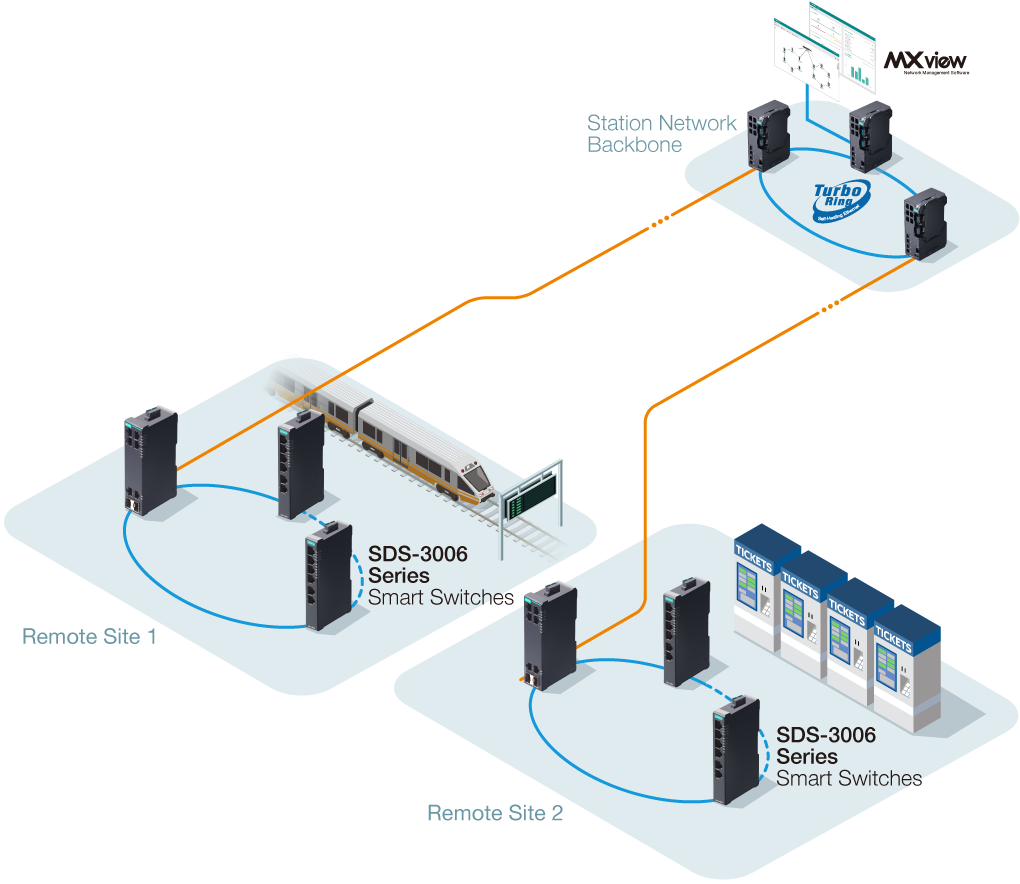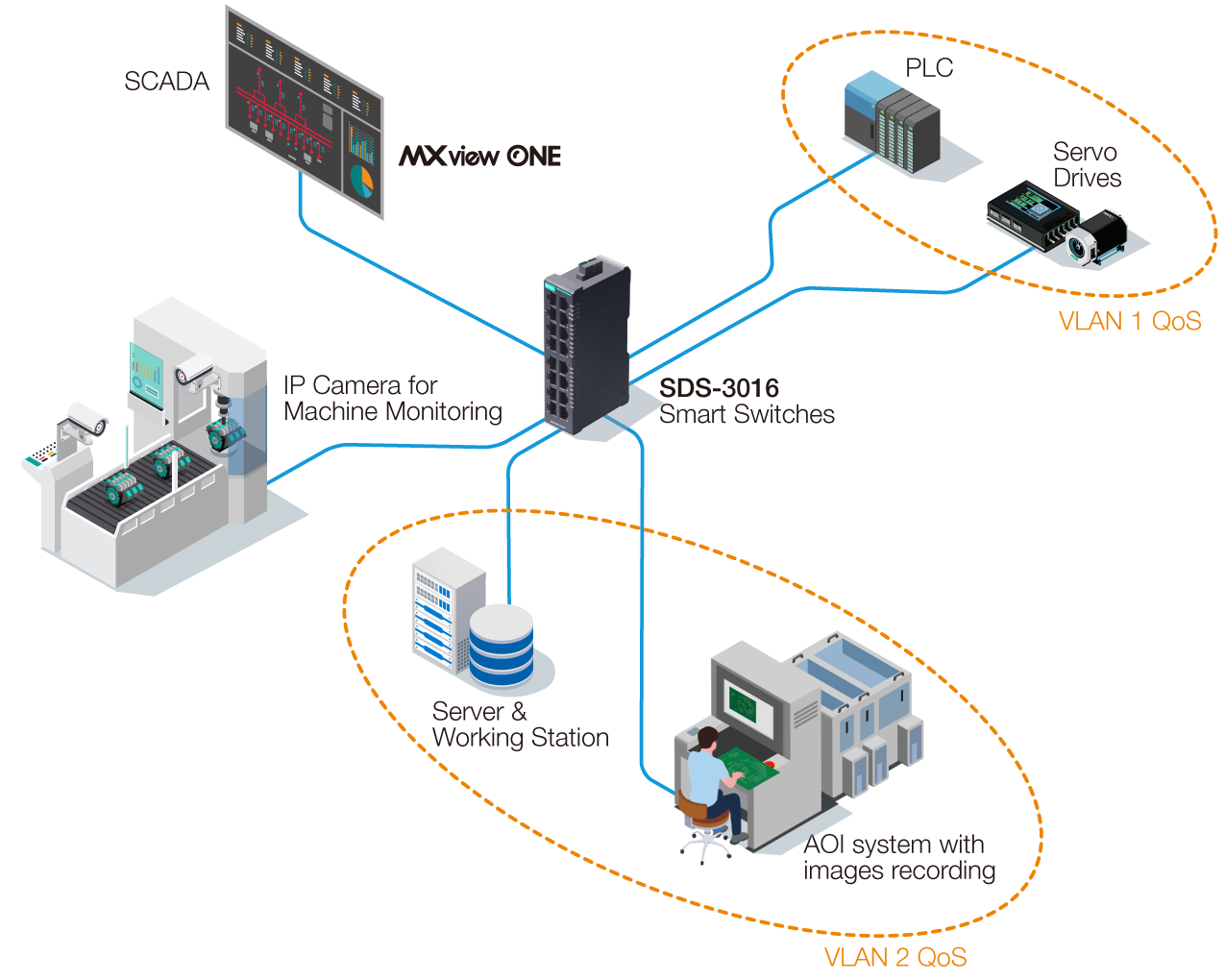
The Difference Between Managed Switches and Smart Switches
| Managed Switch | Smart Switch | |
| Features |
 |
 |
| Management | Full Management SNMP、Network and Industrial Protocols、 SSH、Remote Login、 CLI |
Basic Management SNMP、Network and Industrial Protocols |
| Network Functions | Flexible Support VLAN, QoS, ACL, Link Aggregation, SPAN/RSPAN, and more |
Essential Settings Basic VLAN and QoS |
| Redundancy | Advanced Protocols Turbo Ring, Turbo Chain, STP, RSTP, MSTP, MRP, Link Aggregation, and more |
Basic Redundancy STP/RSTP/MRP |
| Monitoring | Advanced Traffic Mirroring and Port Monitoring | Basic Port Monitoring |
| Security Protection | Robust Security Features – Port Security, 802.1X, ACL, and RADIUS | Basic Security Features – Port Monitoring and Lockdown |
Smart Switch Another Option for Network Upgrades
Reliability, efficiency, visibility, and security are key elements in building a robust network. If you're planning to upgrade your network—whether by using fiber uplinks to transmit data between remote and distributed devices, adding different models and ports to enhance network planning flexibility, or simply looking for a cost-effective and reliable upgrade solution—now you have another option.
Moxa’s new SDS-3000/G3000 Series of smart switches strikes the perfect balance between functionality and cost, making it stand out in the market.Discover how to choose the smart switch that best fits your needs.

Fully Meets Essential Networking Needs
- Provides essential features such as basic VLAN and QoS to build a simpler network
- No need for advanced network redundancy protocols and tools such as Turbo Ring, Turbo Chain, or the Command Line Interface (CLI)
- Supports RSTP/STP/MRP network redundancy to enhance network reliability
Easy to use, enabling faster deployment
- Simple configuration with minimal setup requirements
- Lowers the learning curve for non-technical users
- Intuitive configuration interface enables quick and easy installation
Reduces maintenance efforts
- Fewer advanced features reduce system complexity, significantly lowering maintenance requirements
- Reduces firmware update frequency, simplifying management processes
Offers both cost and space efficiency
- An affordable smart switch ideal for network deployments with strict computing requirements
- Suitable for network systems that do not require a wide range of features
- Compact design allows installation in space-constrained cabinets
Leverage Moxa’s smart switches to enable intelligent operations
A new option to enhance network reliability while maintaining flexibility and cost-effectiveness

A large industrial site is seeking a cost-effective basic management solution for deployment across multiple remote locations.They need to ensure reliable network connectivity without exceeding their budget, enabling data transmission from the edge to the core while collecting data from numerous distributed devices
Why Choose Moxa’s SDS-(G)3000 Smart Switches?
- Fiber uplink options enable long-distance connections.
- Supports RSTP/STP/MRP network redundancy to enhance network reliability.
- Cost-effective and easy to maintain, offering essential security features compliant with IEC 62443 standards.
A new option to improve network data transmission efficiency.

A manufacturer is currently using unmanaged switches to transmit high-definition data. The company is striving to improve network efficiency to address bandwidth issues. VLAN and QoS enable high-efficiency and reliable network performance. When paired with MXview One, bandwidth usage can be easily monitored and tracked
Why Choose Moxa SDS-(G)3000 Smart Switches?
- Full Gigabit models are available with various port counts to support the bandwidth required for machine vision data transmission.
- With up to 34 models available, it offers maximum flexibility to meet diverse networking and customization needs.
- Supports RSTP, STP, and MRP network redundancy to enhance network reliability.
- An intuitive interface displays key switch information.

 采用全球最先进SSL 256bit传输加密机制建议使用Chrome、Firefox、Safari最新版本浏览Design by WebTech 网页设计
采用全球最先进SSL 256bit传输加密机制建议使用Chrome、Firefox、Safari最新版本浏览Design by WebTech 网页设计
